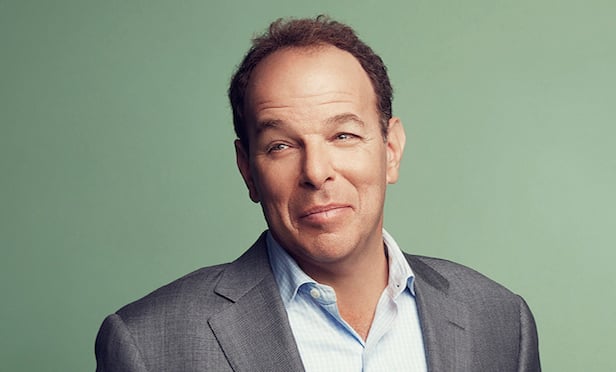 Doug Harmon, chairman of capital markets, Cushman & Wakefield
Doug Harmon, chairman of capital markets, Cushman & Wakefield
NEW YORK CITY—Last month Cushman & Wakefield's Doug Harmon and Adam Spies (along with their team) did it, again. They sold Equity Residential's 101 West End Ave., a two-building, 506-unit Upper West Side apartment complex, spanning the blocks of W. 64th and W. 65th streets for $416 million. Never mind that the seller was billionaire Sam Zell's company. What Harmon found most interesting was the unusual bidder activity and the continued strong pricing. Harmon, Cushman & Wakefield's chairman of capital markets, sits down with GlobeSt.com to discuss this deal and other deal making trends.
GlobeSt.com: So, Doug what stuck out the most to you about the Equity Residential sale?
Harmon: Ten years ago, before the financial crisis, eight out of 10 times the top bidders for any large New York City multifamily property would have been the traditional apartment REITs. We introduced EQR and UDR into the Manhattan market and also did plenty of deals with Archstone and others. At that time, the REITs were the most active bidders because of their inexpensive cost of capital and their desire to ramp up their New York presence was calculated and intense. Today, there is a very broad, global competitive landscape of institutional and private investors allocating more capital into the residential space—often times re-allocating from different asset classes into multifamily.
 101 West End Ave. sold for $416 million./ Photo by Betsy Kim
101 West End Ave. sold for $416 million./ Photo by Betsy KimGlobeSt.com: In August, just one month before, you and Adam sold AEW's 375-unit, 33-floor, Hell's Kitchen residential property, The Helux, at 520 W. 43rd St. for $193 million. I understand that deal is a bit related to 101 West End Ave. because you ended up selling it to the same buyer. How did that come about? And what did those results tell you?
Harmon: One year ago, nobody would have predicted that Dermot, USAA and their new Dutch pension fund partners (PGGM) would have been the winner of that competitive Helux offering.
Once we appreciated the players, their pace, their streamlined process and their desire for opportunistic multifamily deals like The Helux, we believed they should be a strong candidate for the same general value add proposition at 101 West End Ave., albeit at more than twice the size of The Helux. In our firm's current platform/system we can often see the capital forming before anybody else and we can safely test drive that capital in a controlled, unique marketing environment that never compromises the process or value and in most cases, produces superior results.
GlobeSt.com: You knew the buyers. You knew the sellers. You knew the available capital. So, what could have surprised you with these deals?
Harmon: It's more surprising who is winning residential deals today than it's ever been. Although aggressive institutional capital has been looking to buy into the residential market for a while—much of the most competitive capital today wouldn't have been on anyone's radar 10 years ago.
GlobeSt.com: Hugh Kelly, Ph.D. CRE, principal, Hugh Kelly Real Estate Economics and special advisor to Fordham University Real Estate Institute, has told me that institutional investors and private equity funds shifted to multifamily, originally triggered by the losses incurred in the foreclosure crisis. With the not too distant memories of the Great Recession looming in the background, do you think large institutional investors in the multifamily sector could lead to a “too big to fail” problem, ultimately falling upon tax payers for bailouts?
Harmon: No, I don't think so. The winners of the largest multi deals over the last few years have a much more disciplined approach with their capital, their partners and their plans for the asset. Today's well capitalized investors are tested stewards of capital and they no longer rely on high octane, high leveraged, wobbly, capital stacks. The winning investors in this cycle have raised more core/core+ capital that appreciates boring, consistent, long-term, stable returns. However, investors are also looking for a story around future upside potential and in the multifamily sector we have been adept at using data and analytics to prove out the ability to achieve higher rents from executing unit renovations which is a key aspect to pushing pricing for many of these older, vintage multifamily deals.
We are also seeing investors look to significantly longer-term hold periods which is healthy for the multifamily sector as a whole.
At Cushman & Wakefield, we have the luxury of operating on sale or joint venture mandates in a different and more creative way than most other advisors who don't have the same deal flow, track record or global platform strength. We are also performing a lot of very successful quasi arranged marriages of larger more complex deals vs. conducting a typical “auction” process.
GlobeSt.com: Dr. Kelly agrees that these larger investors add stability to the multifamily market and the effect is positive because it keeps the market liquid. He has said that the financial crisis was in large part a liquidity crisis—where homeowners had to drop prices even at enormous losses to sell.
He has pointed to three main investors now in the CRE multifamily sector: (1) large cross-border and institutional investors; (2) private equity; and (3) real estate investment trusts. Dr. Kelly has pointed out each of these operate under different strategies. So, what makes a successful deal?
Harmon: It's not only matchmaking buyers with sellers. It's also choosing which marketing processes to deploy for any given sales assignment. This is often more art than science and is based on judgment which is a byproduct of over $200 billion dollars of past transaction experience, over multiple cycles spanning 25 years. Distilling the intricacies of what went right and what went wrong in each sale process helps formulate the plan for any future monetization. It's kind of straightforward and simple. The more big deal experience the advisors have, the better equipped they are to see and to solve not just the challenges in front of them, but also the challenges that will inevitably rise that one cannot see around the corner.
 Stuyvesant Town – Peter Cooper Village, Manhattan's largest apartment complex, last sold for $5.45 billion.
Stuyvesant Town – Peter Cooper Village, Manhattan's largest apartment complex, last sold for $5.45 billion.GlobeSt.com: Talking about “big deals” and challenges—back in December 2015, you sold Manhattan's largest apartment complex, Stuyvesant Town-Peter Cooper Village to Blackstone Group and Ivanhoe Cambridge for $5.45 billion dollars backed by Fannie Mae. Your transaction followed a rather calamitous, decade-earlier deal—one in which you were not involved.
The New York Times had reported in 2006 Tishman Speyer and BlackRock Realty Advisors bought the development for $5.4 billion, then lost it to lenders three years later when the project ran out of money. Their investors lost more than $2 billion and tenants feared losing their affordable housing. It became a poster child for the credit crisis. What was the most gratifying aspect of the sale which you brokered?
Harmon: With our sale the affordability of the project was protected, the constituents consulted, the politicians appeased, the tenants satisfied, and the properties' reputation restored. The development was turned completely around in 2015. I was gratified that the sale could serve as a model to transact for the greater good, for the benefit of all stakeholders, for the long term, with a sustainable capital structure fueled almost as much by equity as by debt. What was most amazing was that the sale not only set a world record for the highest price ever achieved on a commercial real estate asset but also came with numerous newly crafted restrictive covenants and rent protections ensuring long-term affordability at the property and protecting tenants and other stakeholders for the foreseeable future. It was very gratifying that we could accomplish a deal that left everyone satisfied: Blackstone (the buyer), the community, the tenants, the governor, the mayor, the councilmen/women, the tenants committee, the various sellers, the real estate market, the residential business, the city, etc. It restored confidence that even one of the most tarnished properties could be restored and reinvigorated with a new sale that could be structured in a way that resulted in a win-win for all involved.
GlobeSt.com: You were also the exclusive advisor in this most recent sale of Starrett City, the nation's largest subsidized affordable housing complex to Brooksville Company and Rockpoint Group for $905 million. That deal closed in May 2018. Again, about a decade earlier, Starrett City was on the market in a more cumbersome process that led to a well-publicized failed sale. How did these events affect how you handled your deals?
 Starrett City, the largest, subsidized affordable housing complex in the US, sold for $905 million.
Starrett City, the largest, subsidized affordable housing complex in the US, sold for $905 million.Harmon: This is a good example of applying big deal experience to another complicated high wire act and high profile difficult transaction. Starrett is a Stuyvesant Town little sibling in the pantheon of famous real estate calamities. We for sure applied a mixture of lessons that we not only learned from observing others' failed previous sales as well as the positive lessons learned from our success of Stuyvesant Town. For my team, working these complex large deals are a little bit like playing in multiple Super Bowls. The pressures are different and the scrutiny is intense but no matter how many big games you are fortunate to play in, every big game is different. There is no substitute for front line experience. The beauty of our business is no matter what we are selling or how many times we have sold a particular asset or similar assets, it always involves new people with new issues and new disruptive challenges that make every game, every sale, every joint venture or every recapitalization challenging and unique.
When a sale goes smoothly from start to finish, people may assume the business of the sale is relatively pedestrian and perhaps others could have achieved the same outcome. But more often than not there are major problems and complex obstacles that need to be overcome to have success, and that is when and how one earns their reputation.
GlobeSt.com: If you had to give one piece of advice to succeed in your field, what would it be?
Harmon: In the deal business, for me its maintaining more of a principal mentality, caring deeply for the outcome and being passionate about not letting a client down. Those ingredients are some of the most important attributes of being a trusted advisor whom clients will want to rely on, time and time again. We try hard not to overpromise and we try even harder to outperform. We are creative on all aspects of the sale and we are told often that is our special sauce.
© Touchpoint Markets, All Rights Reserved. Request academic re-use from www.copyright.com. All other uses, submit a request to [email protected]. For more inforrmation visit Asset & Logo Licensing.







